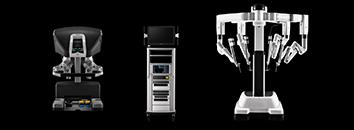Department of Orthopaedics And Joint Replacement

Joint replacements have become very common and provide an effective solution for painful joints that cannot be managed with conservative treatment. The Department of Orthopaedics And Joint Replacement at the Gleneagles Hospitals has a range of ingenious treatments, which cater to the needs of the patients, and aim at providing the best services and treatments possible. The Department has a team of Orthopaedics And Joint Replacement surgeons trained by a group of faculty members from renowned universities and hospitals.
With comprehensive and joint care, Gleneagles Hospitals helps in restoring your sense of mobility. Gleneagles Hospitals have well-equipped wards with international standard amenities to treat any condition. The orthopaedic team works in collaboration with the imaging department to help in accurate diagnosis and planning a customized treatment. We aim at quick recovery and healthy living for our patients.
Our team consists of the best of the Orthopaedic specialists with specialization in modern surgical techniques, and a Physiotherapist, who has years of experience and expertise in treating Musculoskeletal Injuries. Our team of talented doctors has been trained from renowned institutions in India and abroad under eminent stalwarts of healthcare that help them deliver unfailing results from simple fractures to grave injuries resulting from heightened physical movements.
Our approach consists of making a complete diagnosis by checking the injury thoroughly followed by formulating a management plan. The department is well equipped with all the necessary machines for the assessment of the injury and also to provide treatment for it. All these have been made for the comfort of the patients and to provide them with quality service.
The Department of Orthopaedics And Joint Replacement provides treatment for the following common diseases among many others:
TOTAL HIP REPLACEMENT
A total hip replacement is indicated in patients with severe or painful osteoarthritis of the hip joint or the case of fractures. Hip replacement relieves pain and functional disability and improves the quality of life. The procedure involves removing the damaged cartilage and bone and replacing it with prosthetic components. General anaesthesia is administered before the procedure.
During the procedure, the incision is made in the upper part of the thigh. The damaged femoral head is removed and replaced with a metal stem. The femoral stem is cemented into the bone. A ceramic ball is placed over the upper part of the stem. A metal socket is used to replace the damaged cartilage of the socket. A plastic liner is then inserted between the new metal ball and socket to allow smooth gliding movement. Then the incision is closed in layers with suture and covered with sterile dressing.
KNEE REPLACEMENT
Knee Replacement Surgery replaces parts of injured or worn-out knee joints. The surgery can help ease pain and make the knee work better. During the surgery, damaged bone and cartilage are replaced with parts made of metal and plastic.
To decide whether a Knee Replacement is right for you, a surgeon checks your knee's range of motion, stability, and strength. X-rays help show the extent of the damage.
The right artificial joints and surgical techniques for you depend on your age, weight, activity level, knee size and shape, and overall health.
The most common reason for Knee Replacement surgery is to ease pain caused by arthritis. People who need Knee Replacement surgery usually have problems walking, climbing stairs and getting up out of chairs.
If only one part of the knee is damaged, surgeons often can replace just that part. If the entire joint needs to be replaced, the ends of the thighbone and shinbone are reshaped and the entire joint resurfaced. These bones are hard tubes that contain a soft centre. The ends of the artificial parts are inserted into the softer central part of the bones.
Ligaments are bands of tissue that help hold joints together. If the knee's ligaments aren't strong enough to hold the joint together by themselves, the surgeon may choose implants that can be connected so they can't come apart.
BICEPS TENODESIS
Biceps tenodesis is indicated for patients with biceps tendon tears, severe biceps tendinopathy, or biceps instability that may be associated with rotator cuff tears. The biceps tenodesis procedure involves detaching the normal attachment of the biceps tendon and reinserting the tendon to the bone of the humerus. General anaesthesia is administered before the procedure.
During the procedure, the tendon is marked with a suture using an arthroscope. The tendon is cut using an arthroscopic scissor and a small incision is made in the front of the shoulder to access the biceps tendon. The tendon is trimmed and fixed back with a screw into a deep bone tunnel of the humerus which is made by the reamer. Then the incision is closed with sutures and covered with a sterile dressing.
JOINT ASPIRATION
Joint Aspiration is also known as Arthrocentesis. It is useful for the diagnosis of certain joint problems. The Joint Aspiration method is the best and the most accurate method to identify whether the joint pain and swelling are caused due to an infection or whether it is caused by a Crystal-related Arthritis problem i.e., Gout.
For this procedure, the doctor first injects the area to be studied with anaesthesia and numbs the particular area. Then the doctor inserts a larger needle into the joint space, draws out joint fluid (synovial fluid), and examines the fluid under a microscope. The doctor analyzes the fluid based on colour and clarity and performs other tests such as white blood cell count. This procedure is quick, easy, and relatively painless.
ARTHROSCOPY
Arthroscopy is a Minimally Invasive Orthopaedic procedure carried out to understand the inner workings of a specific joint by a visual examination. The procedure is performed by an Arthroscope that not only provides a visual detailing but is also capable of carrying repair and correction of the joint.
The procedure begins with a small skin incision and this is performed by giving local, spinal, or general anesthesia. During Arthroscopy, doctors take a piece of tissue for biopsy, analyze the tissue and make necessary corrections by performing the surgery. Disorders commonly found during Arthroscopy include inflammation of the synovium lining the joint, ligament, tendon, or cartilage damage. Such conditions affect the person suffering from Arthritis or a person with a history of joint injuries. All these conditions can be repaired or removed during arthroscopy. There is a very small risk of joint infection with this procedure. Most people do not need to stay overnight in the hospital as the time taken to recover from the surgery is quick.
BEST ORTHOPAEDIC HOSPITAL IN INDIA FOR ORTHOPAEDIC SURGERY, KNEE AND HIP REPLACEMENT AND TREATMENT OF ORTHOPAEDIC DISEASES
Advanced facilities for orthopaedic surgery with excellent diagnosis and affordable cost of orthopaedic treatment in India
Gleneagles Hospitals India is the best orthopaedic hospital in India offering the best orthopaedic treatment, complex orthopaedic surgeries and care for all orthopaedic and joint problems. We offer knee and hip replacement in India performed by the best orthopaedic surgeons in India. Our wealth of experience and wide-ranging expertise in orthopaedics have helped us grow into the best knee and hip replacement hospital in India with orthopaedic doctors in India. The hospital also offers the best treatment for sports injuries, joint pains and other common orthopaedic conditions.
WAYS TO PROTECT YOUR JOINTS
INCREASE FLEXIBILITY: When a joint is stiff, it causes inflammation and weakens the muscles protecting the joints. Stretching is the best way to keep your body flexible and maintain motion around the joints.
GET YOUR NUTRITION IN CHECK: Maintain a healthy diet by avoiding saturated fats and processed foods. Minimizing excess body fat and inflammatory responses are ways to ensure healthy muscles and joints.
WEAR THE RIGHT SHOES: Choosing the right shoes for your legs is very important as it provides cushioning, stability and comfort while walking. It’s time to replace your worn-out shoes and find the right one.
MAINTAIN PROPER POSTURE: Staring at the computer screen for too long can cause eyestrain, blurry vision, dry eyes, headaches, and neck, back and shoulder pain.
LISTEN TO YOUR JOINTS: Avoid being overactive and know when to stop a certain movement. Sometimes, “no pain, no gain” can lead to problems if not addressed early. So, do not strain your joints.
WATCH YOUR WEIGHT: Keeping your weight within a healthy range is the best thing you can do for your joints. Exercise regularly and maintain your weight to reduce the pressure on your knees, hips and back.
Our Doctors
View all-

Dr Siddhartha Maredupaka
Consultant Orthopedic, Joint Replacement Specialist
MBBS, MS - Orthopaedics, FAA (Vienna), FKSM (Korea), FSSM (Seoul)
-

Dr Ajit Yadav
Senior Consultant
MCh(UK) MS(Ortho)
-

Dr Basavaraj C M
HOD & Sr Consultant - Orthopaedic Specialist & Joint Replacement Surgery
MBBS, D Ortho, DNB (Ortho), MRCS (Glasgow), FRCS (Trauma and Ortho), Fellowship in Arthroplasty (UK)
-

Dr V V Satyanarayana
Consultant
MBBS, MS (Orthopaedics), MCh Trauma (UK), AO Fellow Trauma & Arthroplasty (Greece)
-

Dr Anup Khatri
Senior Consultant
MBBS, DNB, Fellowship in Joint replacement(Zimmer Biomet), Fellowship in Foot and Ankle Surgeries(IFAS-UAB) USA
BRINGING THE LATEST TECHNOLOGIES FROM AROUND THE GLOBE FOR ACCURATE DIAGNOSIS AND TREATMENT OF DISEASES
The true joy of movement is being able to move around pain-free and uninhibited. Increasing age, injury or other factors often result in joint pains that limit the joy of movement. The Department of Orthopaedics and Joint Replacement delivers comprehensive consultation and surgical care to help patients with arthritis, joint pains, joint dislocations and other orthopaedic problems. One of the finest orthopaedic facilities, Gleneagles Hospitals has the best infrastructure and surgeons to undertake all major orthopaedic procedures.
- What are the causes of Ankylosing Spondylitis?
Ankylosing Spondylitis does not have any major-specific causes but people who have a gene called HLA-B27 are at a very high risk of developing Ankylosing Spondylitis.
- Treatment for Ankylosing Spondylitis?
Ankylosing Spondylitis does not have any specific treatment but the goals of the treatment include reducing the stiffness, discomfort, and pain through Exercise, Physical therapy or Drugs.
- How can I tell if I dislocated my elbow?
Your arm has three bones namely the radius, ulna, and humerus. The radius and ulna are the two bones of your forearm; when these bones go away from the alignment with the arm bone called the humerus.
- How do you treat a dislocated elbow?
- Medications
- Splint
- Surgery
- Physical therapy and rehabilitation
- What is causing knee pain?
There are different knee pain causes such as injuries, mechanical problems, different types of arthritis and other problems, different types of knee injuries that trigger knee pain include Ligament Injury, Fractures, Knee Bursitis, Patellar Tendinitis, and Meniscus Injury.
- Types of Knee pain treatment?
The treatment for knee pain depends on the cause of pain, the treatment options for knee pain include: Physical Therapy, Injections, Surgery, Arthroscopic surgery, Partial Knee Replacement Surgery, Total Knee Replacement Surgery
- What is the treatment for sacroiliitis?
The treatment mainly depends on the underlying cause of your pain Pain painkillers to relieve pain, Muscle relaxants to reduce muscle spasms, Tumor necrosis factor (TNF) inhibitors to relieve sacroiliitis associated with ankylosing spondylitis.
- What Causes Tendinitis?
Tendinitis is often caused due to repeated injury to an area such as the wrist or ankle which is common during sports or repetitive movements other causes are: - Bad posture or walking habits, Arthritis and related conditions (for example, osteoarthritis, rheumatoid arthritis, and gout), Stress on soft tissues which results from a poorly positioned joint or bone, Diabetes, Side effects from certain medications.
- What is the best treatment for Tendinitis?
FAST or Focused Aspiration of Scar Tissue is the best and most effective treatment of tendinitis most of the patients return to their normal activities within one or two months. It is a minimally invasive procedure that uses ultrasound and some very small instruments to remove the affected tendon scar tissue.
FAQ
Why Choose Us?
-
PATIENT EXPERIENCE
Your care and comfort are our top priorities. We ensure that the patients are well informed prior to every step we take for their benefit and that their queries are effectively answered.
-
LATEST TECHNOLOGIES
The Gleneagles Hospitals' team stays up to date on the advancements in medical procedures and technologies. Experience the Future Healthcare Technologies now at Gleneagles Hospitals.
-
PROVIDING QUALITY CARE
Strengthening lives through compassionate care, innovative therapies and relentless efforts. It reflects in the DNA of our passionate team of doctors and dedicated clinical staff.










